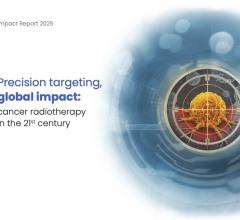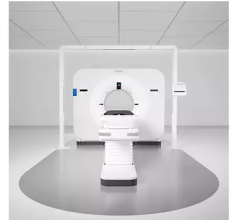
February 15, 2018 — Accuray Inc. recently announced that data from a study of 138 patients with trigeminal neuralgia (TN) showed stereotactic radiosurgery (SRS) delivered with the CyberKnife System resulted in rapid and long-lasting pain relief, with minimal side effects. The study, titled "Image-Guided Robotic Radiosurgery for Trigeminal Neuralgia," was published in the December 2017 issue of the peer-reviewed journal Neurosurgery and provides robust clinical data supporting the efficacy and safety of the system for TN patients. It is the largest single-center study of TN patients treated with the CyberKnife technology reported to date.
"This study is important because it reinforces that CyberKnife SRS provides unique benefits in the treatment of TN. Pain management goals were achieved and bothersome complications were rare even though a less invasive approach to delivering radiation was used," said Prof. Pantaleo Romanelli, M.D., Centro Diagnostico Italiano, Milan, Italy. "Importantly, we used a consistent treatment protocol for each patient that resulted in reproducible outcomes. This should provide confidence to other clinicians that they, too, can achieve similar clinical results."
TN is a chronic pain disorder affecting the trigeminal or 5th cranial nerve often characterized by severe pain, with some patients describing it as the most atrocious pain human beings can suffer. The condition requires long-term medical treatment which usually starts with medications to lessen or block the pain signals sent to the brain. Over time some patients stop responding to medications or suffer from unpleasant side effects. For those patients, injections, surgery or radiosurgery are alternative treatments. Techniques like CyberKnife SRS may provide new hope for people living with this severe and challenging-to-treat medical condition.
In this study, 138 patients with TN were treated with the CyberKnife System. A prescription dose of 60 Gy was delivered in a single fraction to a 6-mm segment of the nerve. The minimum and median follow-up was 36 and 52.4 months, respectively. All patients had taken medications for an average of 4.3 years before treatment with radiation. The primary study objective was to evaluate the safety and effectiveness of CyberKnife SRS in TN patients.
Pain relief was achieved in 93.5 percent of patients after a median delay of three weeks after treatment. Stable pain control was maintained by 76 percent of patients three years after the first treatment. The remainder of the patients attained pain control after a second treatment
In terms of elimination of pain medication, 78.9 percent of patients were completely pain- and medication-free within six months after treatment. Ninety-three-point-five percent of patients were able to decrease the dose of medications intended to control pain throughout follow-up and finally cease pain medication.
Overall, 18.1 percent of patients developed some sensory disturbance. Of these patients, 68 percent experienced the onset of complications after their second treatment; this is a typical side effect following re-irradiation
The frameless CyberKnife Robotic Radiosurgery System delivers radiation beams from multiple angles using a non-isocentric approach with sub-millimeter accuracy, according to Fabienne Hirigoyenberry-Lanson, Ph.D., vice president global medical and scientific affairs at Accuray. He said the reproducibility of the delivery technique resulted in excellent clinical outcomes for the patients with a non-invasive technique, unlike Gamma Knife.
The CyberKnife technology's image guidance and automatic beam correction capability enabled the precise dose targeting necessary to treat TN. No head frame was required to obtain the pain control and side effect profile achieved with Gamma Knife, as reported in other studies.
For more information: www.accuray.com
References
Romanelli, P., Conti, A., Bianchi, L., Bergantin, A., et al. Image-Guided Robotic Radiosurgery for Trigeminal Neuralgia." Neurosurgery. 2017 Dec 23. doi: 10.1093/neuros/nyx571


 November 04, 2025
November 04, 2025 









